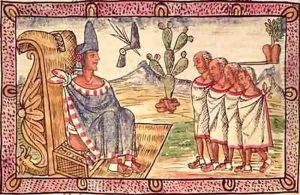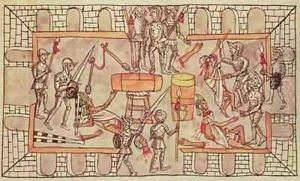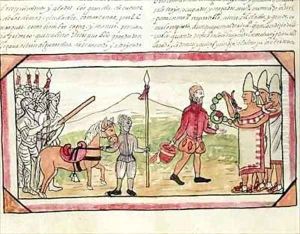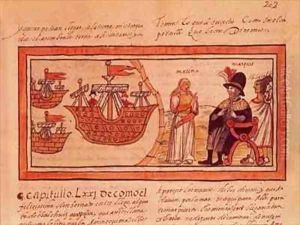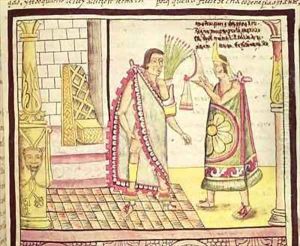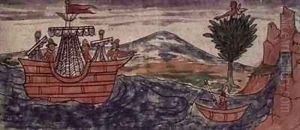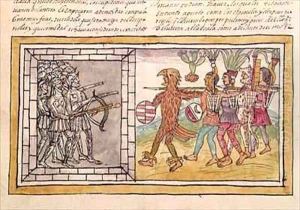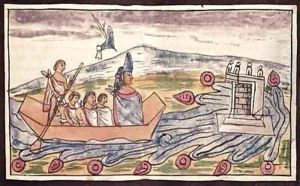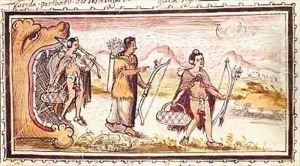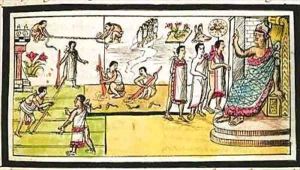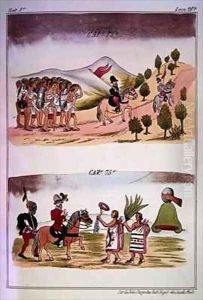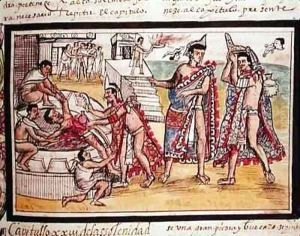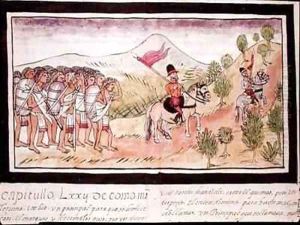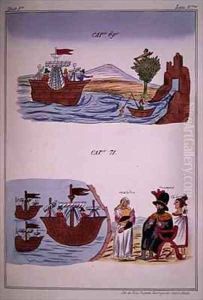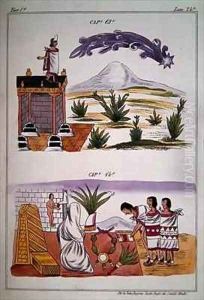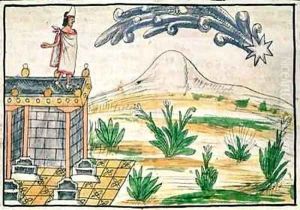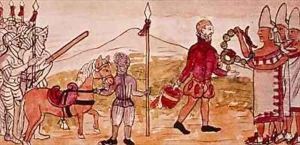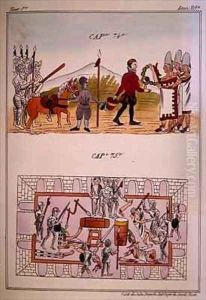Diego Duran Paintings
Diego Durán, also known as Fray Diego Durán, was a Spanish Dominican friar best known for his contributions as an early historian of the indigenous peoples of the Americas, particularly the Aztec civilization. Born in Spain around 1537, Durán moved to the New World as a child. His exact birthplace in Spain is not documented, but it is known that he arrived in Mexico, then part of the Spanish Empire, at a very young age. Durán was educated by the Dominican Order in Mexico City, where he developed a deep interest in the native cultures and languages, learning Nahuatl, the language of the Aztecs.
Durán's work as a historian is particularly significant because he was among the first Europeans to recognize the importance of preserving the history and traditions of the conquered peoples. His major work, 'Historia de las Indias de Nueva España e Islas de Tierra Firme' (The History of the Indies of New Spain), was a comprehensive account of Aztec history, culture, religion, and society. Durán showed a unique approach for his time, often presenting the Aztecs in a sympathetic light and criticizing the brutal methods of the Spanish conquest. He relied heavily on oral histories and the accounts of indigenous informants, which made his work an invaluable resource for understanding pre-Columbian history and the early colonial period in Mexico.
Durán's writings were not published during his lifetime and remained in manuscript form for centuries, only coming to light and being recognized for their value in the 19th century. His detailed descriptions of Aztec rituals and ceremonies, including their religious practices and calendar, have been particularly praised for their ethnographic significance. Durán was also an important source for the study of Aztec mythology and the interpretation of indigenous codices, which were pictorial documents used by the Aztecs for various purposes, including historical recording.
Diego Durán passed away in 1588, leaving behind a legacy that would only be appreciated long after his death. His works are now considered fundamental for the study of pre-Hispanic cultures in Mexico and for understanding the impact of the Spanish conquest on the indigenous peoples of the Americas.
